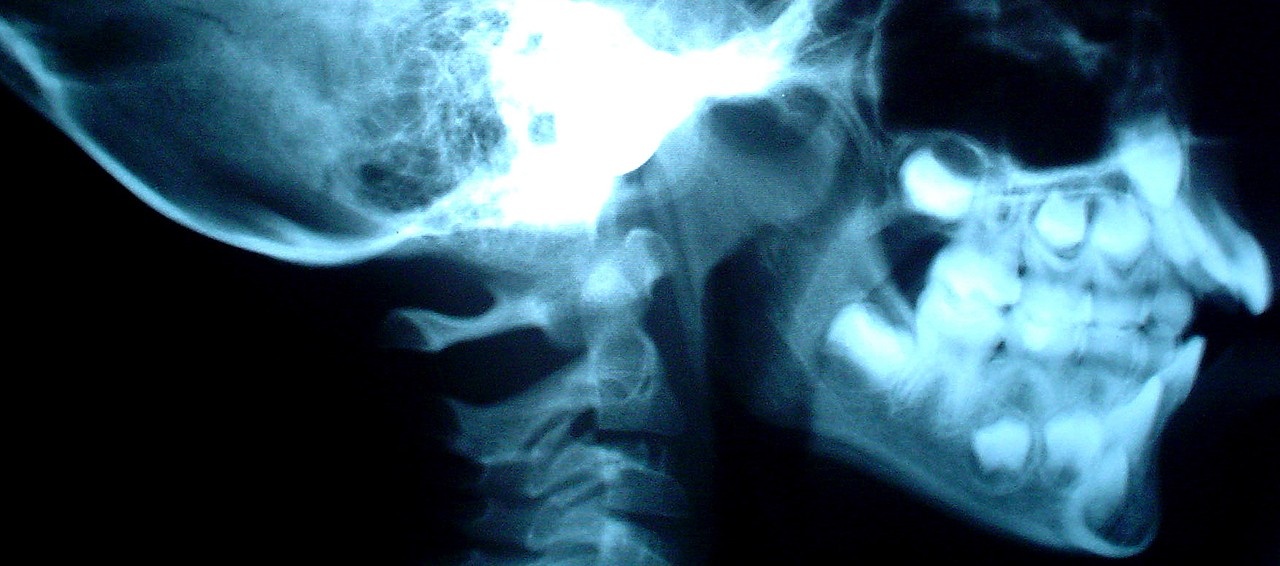Chris Thomas, PhD, FCCPM
Associate Professor

Email: chris.thomas@nshealth.ca
Phone: 902-473-1302
Fax: 902-473-6120
Mailing Address:
Dalhousie University
Rm 3005, Nova Scotia Cancer Centre
5820 University Avenue
Halifax, B3H 1V7
Research Interests
External beam radiotherapy (EBRT) is most commonly delivered using a linear accelerator (linac) that consists of a gantry, from which the radiation beam is emitted, and a patient couch, on which the patient lies while radiation is being delivered. Both the gantry and couch can rotate about a common isocenter with the patient’s tumour at isocenter. In this manner, radiation can be directed to the tumour from a number of different entrance angles in order to minimize radiation toxicity to sensitive normal structures in the patient’s body. In most cases, the choice of the entrance angles are determined manually by the planner and therefore may not be optimal in terms of minimizing radiation dose to normal structures.
Stereotactic radiotherapy is a specific external beam radiotherapy (EBRT) technique that involves highly focused beams of radiation that deliver very high doses of radiation to sites within the cranium (stereotactic radiosurgery, SRS) or body (stereotactic body radiotherapy, SBRT). Avoidance of irradiation of normal structures is important in all EBRT, but in SRS and SBRT it becomes even more essential due to the higher doses of radiation provided.
If one looks at all possible entrance angles as occupying a 4pi sphere of possibilities, then algorithms can be devised to select the optimal entrance angles to treat the tumour while avoiding entrance radiation to the normal structures. This 4pi sphere would involve rotations of the gantry and patient couch to enable these entrance angles. If the gantry and/or couch move while radiation is being delivered, a trajectory is traced out on this 4pi sphere. Another degree of freedom available during treatment is the orientation of the linac collimator and direction of travel of the multi-leaf collimator (MLC) system which shapes the radiation beam. The direction of travel of the MLCs can also greatly influence the amount of radiation normal structures will receive.
My research program is focused on optimizing the gantry, couch, and collimator angles to take full advantage of this 4pi space, and to accurately predict collisions through patient and linac modelling. Using computer software, we can map out regions of overlap between the normal structures and the tumour from the point of view of the radiation source, identify collision zones, and use those as input into other software to create optimal trajectories. We can also use similar maps to govern the orientation angle of the MLCs as radiation is being delivered. The work we have done to date has shown that we can achieve reduced dose to normal structures and increased treatment efficiencies, while producing comparable tumour coverage. This can translate into reduced toxicities for patients, increased quality-of-life for patients, and potentially reduced treatment times.
Our initial work was in cranial treatments (SRS), and we are currently moving into extra-cranial treatments (SBRT), and investigating other applications beyond SRS and SBRT for the algorithmic framework we have developed. As radiation linac vendors begin to allow simultaneous coordinated motion of all axes of rotation of their linacs in clinical scenarios, the research horizon expands to allow more complex delivery situations, which in term will require more complex quality control of treatments and optimization of treatment plan design to work within the mechanical restrictions of the linacs in order to produce safe plans of high quality.
Clinical sites
Stereotactic body radiotherapy, stereotactic radiotherapy/radiosurgery
Education
- BSc (St. Mary’s University)
- MSc (Dalhousie University)
- PhD (University of Western Ontario)
- Medical Physics Residency (Princess Margaret Hospital)
Academic interests
- Scientific communications
- Patient privacy
Awards and honours
2022 Varian Research Grant “Combined Optimization of Dynamic Axes (CODA) Radiotherapy” (co-PI), $384,698.88.
2022 Springboard Innovation Mobilization Program – Industry Engagement Award in support of attendance at COMP ASM, $2,819.00.
2021 Springboard Innovation Mobilization Program – Patent & Legal funding in support of “Patient-Specific Collision Zones for Radiation Therapy”, $15,000.
2020 Springboard Atlantic IM-Patent & Legal and Proof of Concept award, $35,000 (including matching funds) for Radiation Treatment Planning with Multiple Target Subset Optimization.
2020 Springboard Atlantic IM-Patent & Legal award, $15,000 (including matching funds) for Systems and Methods for Planning, Controlling and/or Delivering Radiotherapy and Radiosurgery Using Combined Optimization of Dynamic Axes (CODA).
Medical Physics Teacher of the year – 2013
2017 Atlantic Canada Opportunities Agency – Atlantic Innovation Fund and Brainlab AG (industrial partner), $3.64M, Novel technologies for treatment of cancer with precision radiotherapy, co-PI with Drs. Mike Sattarivand, Alasdair Syme and Jams Robar.
2017 Springboard Atlantic IM-Industry Engagement award, $7,800 (including matching funds). Co-investigator with Dr. James Robar.
Publications
- Lee, E, MacDonald RL, Thomas CG, Syme A. Technical note: Optimizing the deliverability of trajectory optimization technologies for SRS treatment of multiple metastases with multiple prescriptions. Med Phys, 2025.
- Lincoln, JD, MacDonald RL, Ward L, Johnston S, Syme A, Thomas CG. Serial and parallel organ-at-risk-specific noncoplanar arc optimization for small versus large target volumes in liver SBRT. J Appl Clin Med Phys, 25(9): 1-14, 2024.
- Lincoln, JD, MacDonald RL, Syme A, Thomas CG. Static couch non-coplanar arc selection optimization for lung SBRT treatment planning. Physics in Medicine & Biology, 68(15), p.155011, 2023
- Aldosary G, Koo M, Barta R, Ozard S, Menon G, Thomas CG, Lee Y, Octave N, Xu Y, Baxter P, McEwen M, Hendrickson K, Pollard-Larkin J, Surry K. A first look at Equity, Diversity, and Inclusion of Canadian Medical Physicists: Results from the 2021 COMP EDI Climate Survey. Int J Radiat Oncol Biol Phys, 2023
- Lincoln JD, MacDonald RL, Little B, Syme A, Thomas CG. Comparison of anatomically informed class solution template trajectories with patient-specific trajectories for stereotactic radiosurgery and radiotherapy. J Appl Clin Med Phys 23(11), 2022.
- MacDonald RL, Lincoln J, Church CM, Thomas CG, Syme A. Mean arc distance (MAD): a quantity to compare trajectory 4π sampling in single target cranial stereotactic radiotherapy. Biomed Phys Eng Express, 8(5), p.055006, 2022.
- Lee, E, MacDonald RL, Thomas CG, Syme A. Intra-arc binary collimation with dynamic axes trajectory optimization for SRS treatment of multiple metastases with multiple prescriptions. Med Phys 49(7): 4305 – 4321, 2022.
- Van Oirschot M, Bergman A, Verbakel WFAR, Ward L, Gange I, Huang V, Chng N, Houston P, Symes K, Thomas CG, Basran P, Bowes D, Harrow S, Olson R, Senan S, Warner A, Palma DA, Gaede S. Determining planning priorities for stereotactic ablative radiotherapy (sabr) for oligometastatic disease: a secondary analysis of the sabr-comet randomized trial. Int J Radiat Oncol Biol Phys 114(5): 1016 – 1021, 2022.
- Northway C, Lincoln JD, Little B, Syme A, Thomas CG. Patient-specific collision zones for 4π trajectory optimized radiation therapy. Med Phys 49(3): 1407 – 1416, 2022.
- Reis CQM, Little B, MacDonald RL, Syme A, Thomas CG, Robar JL. SBRT of ventricular tachycardia using 4pi optimized trajectories. J. Appl Clin Med Phys. 1 – 15, 2021.
- MacDonald RL, Syme A, Little B, Ward L, Thomas CG. Toward the combined optimization of dynamic axes (CODA) for stereotactic radiotherapy and radiosurgery using fixed couch trajectories. Med. Phys. [Epub ahead of print], 2019.
- MacDonald RL, Thomas CG, Ward L, Syme A. Intra-arc binary collimation algorithm for the optimization of stereotactic radiotherapy treatment of multiple metastases with multiple prescriptions. Med. Phys. 45(12): 5597 – 5607, 2018.
- MacDonald RL, Thomas CG, Syme A. Dynamic Collimator Trajectory Algorithm for Multiple Metastases Dynamic Conformal Arc Treatment Planning. Med. Phys. 45(1): 5 – 17, 2018.
Other interests and achievements
- Associate Scientist of Beatrice Hunter Cancer Research Institute
- R. Lee MacDonald, Alasdair Syme, Christopher G. Thomas. “Systems and Methods for Planning, Controlling and/or Delivering Radiotherapy and Radiosurgery Using Combined Optimization of Dynamic Axes (CODA)”, filed by Dalhousie University. PCT application: PCT/CA2019/050492.
- R. Lee MacDonald, Alasdair Syme, Christopher G. Thomas. “Radiation Treatment Planning with Multiple Target Subset Optimization”, filed by Dalhousie University. US provisional patent application: US 62/583, 412; PCT application: PCT/CA2018/051418.
- R. Lee MacDonald, Alasdair Syme, Christopher G. Thomas. “Coordinated Radiotherapy for Plural Targets”, filed by Dalhousie University. US patent application: 16/615,074; European patent application: EP 1, 880, 4918.3.
- R. Lee MacDonald, Alasdair Syme, Christopher G. Thomas. “Systems and Methods for Planning and Controlling the Rotation of a Multileaf Collimator during Volumetric Modulated Arc Therapy”, filed by Dalhousie University. US patent application: US 16/083,454; European patent application: 17762383.2; PCT application: PCT/CA2017/050315.
- R. Lee MacDonald, James L. Robar, Christopher G. Thomas. “Method and System for Cancer Treatment with Radiation”, filed by Dalhousie University. US patent: US 10, 441, 813 B2; European patent application: EP 3, 169, 398 A4.
